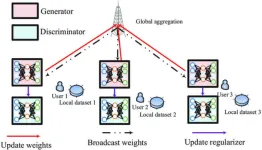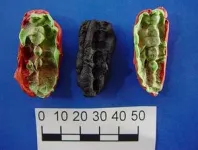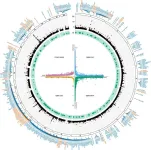Better wireless communication made possible through machine learning
New algorithm integrates deep learning and federated learning for accurate channel estimation
2024-01-18
(Press-News.org)
In today's increasingly interconnected world, high-quality communication has become more vital than ever. Accurately estimating the dynamic status of communication channels is a key factor in achieving this. Recently, a joint research team designed a new algorithm that offers high-level estimation accuracy and privacy protection with low computational and communication costs. This research was published Jan. 5 in Intelligent Computing, a Science Partner Journal.
This new algorithm uses a specially designed deep learning model for precise estimation and a federated learning framework for training the model while keeping user data secure and overhead low. It also includes a user motivation scheme to get the most out of computing resources.
The team tested the algorithm in a wireless communication network using local user datasets and realistic environment datasets. The test on local user datasets demonstrated that their method is more accurate in estimating channel state information compared with some traditional and deep learning algorithms under different signal-to-noise ratios, pilot frequencies and other conditions.
The realistic environment test further proved the effectiveness of the algorithm. The channel data used in the test are from a mobile communication open dataset and include sparse and dense scenarios; the sparse scenario contains 10,000 maps, each containing five base station locations and 30 user locations, and the dense scenario contains 100 maps, each containing one base station location and 10,000 user locations. All users are assumed to be stationary throughout the process.
The results show that the algorithm outperforms three state-of-the-art models in both sparse and dense scenarios, and the performance gap is wider in the sparse scenario where conditions are more variable and complex. That means the model trained through federated learning and with a higher level of user participation is more robust, adaptable and scalable than the benchmark models, which were trained in a centralized way.
In a federated learning framework, the resources used for training are those of the local devices, which exchange parameters instead of raw data with the central server. This reduces computational and communication costs, protects user data privacy and suits large complex communication networks, and thus perfectly complements accuracy-first, less flexible deep learning models, such as, in this case, a generative adversarial network.
A typical generative adversarial network consists of a generator and a discriminator: the former creates samples to approximate real-world data and the latter challenges the samples to push for better results. The team designed their version into a dual-U-shaped network to avoid information loss during sampling and added a regularization function at the discriminator for higher consistency and stability.
The team pointed out that their algorithm has certain limitations, including numerous model parameters and reliance on labeled data. Compressing the model and training it with unsupervised approaches are possible directions for future work. In the future, they plan to explore federated learning in dynamic diverse networks where each device possesses different resources to perform onboard verification and client selection.
END
[Attachments] See images for this press release:


ELSE PRESS RELEASES FROM THIS DATE:
2024-01-18
Glaucoma is the leading cause of irreversible blindness around the globe, affecting up to 44 million people. Although people of African ancestry are most frequently and severely affected by this hereditary disease, its genetic underpinnings in this population have rarely been studied. Now, a team of investigators has published findings revealing previously unknown inherited genetic variants that contribute to primary open-angle glaucoma (POAG), the most common form of the disease. The study was based on the analysis of 11,275 individuals of African descent and is being published January 18, 2024, in Cell.
“Individuals with African ancestry are five times more likely to be affected ...
2024-01-18
Damage caused by sea level rises could cost the EU and UK economies up to 872 billion Euros in total by the end of the century, according to a modelling study published in Scientific Reports.
Ignasi Cortés Arbués, Theodoros Chatzivasileiadis, Tatiana Filatova and colleagues modelled the potential economic impacts of sea level rises for 271 European regions by 2100 under a high emissions scenario (SSP5-RCP8.5) with no new coastal protection measures implemented after 2015. They combined ...
2024-01-18
Members of a hunter-gatherer group that lived in south-western Scandinavia during the Mesolithic era — approximately 10,000 years ago — may have been affected by tooth decay and gum disease, according to a study published in Scientific Reports.
Emrah Kırdök, Anders Götherström and colleagues sequenced the DNA found on three pieces of birch tar — a substance made from heated birch bark — that were excavated in the 1990s from Huseby Klev, Sweden and have been dated to between 9,890 ...
2024-01-18
PHILADELPHIA— A new analysis focusing specifically on people of African ancestry identified three gene variants that may be contributing to this population’s susceptibility to developing and being blinded by glaucoma. People of African ancestry are five times as likely as others to develop glaucoma and up to 15 times as likely to be blinded by the condition, but the vast majority of research has used data from people of European ancestry. Led by researchers at the Perelman School of Medicine at the University ...
2024-01-18
By 2060, according to the Alzheimer’s Association, nearly one in four Americans will be in an age bracket at elevated risk of cognitive decline and Alzheimer’s disease unless interventions can help preserve cognitive function before deficits begin. The COcoa Supplement and Multivitamin Outcomes Study (COSMOS) is a large-scale, nationwide, randomized trial rigorously testing cocoa extract and multivitamin supplements directed by researchers at Mass General Brigham. Two previously published studies of cognition in COSMOS suggested a positive effect for a daily multivitamin. ...
2024-01-18
Nurse home visits to disadvantaged mothers can significantly reduce their rates of hypertension and their daughters’ likelihood of obesity, finds a new reanalysis of health data by a team led by a UCL researcher.
The study, published in the journal JAMA Network Open, reanalysed data taken as part of a Nurse-Family Partnership trial started more than 30 years ago – The Memphis New Mothers Study (1990-1994). The researchers found that prenatal and infancy nurse home visits decreased the likelihood of daughters being obese by 55% and being severely obese by 81% in adolescence. Similarly, mothers of girls showed a decrease ...
2024-01-18
About The Study: The findings of this study that included 31 participants ages 65 to 79 suggest that older drivers, even if they regularly use cannabis, show evidence of impaired driving performance after smoking cannabis. Weaving was increased and speed was decreased at 30 minutes after smoking, which was not correlated with blood tetrahydrocannabinol (THC) concentrations; subjective experience and self-reports of impaired driving persisted for three hours.
Authors: Patricia Di Ciano, Ph.D., of the Centre for Addiction ...
2024-01-18
About The Study: This nonrandomized controlled trial of 108 patients with advanced Parkinson disease found that at 5-year follow-up quality of life remained stable in the deep brain stimulation of the subthalamic nucleus (STN-DBS) group and worsened in the standard-of-care medication group, mainly driven by the favorable effect of STN-DBS on mobility. These findings may provide helpful information when counseling patients on the efficacy of STN-DBS for Parkinson disease and monitoring patients postoperatively in long-term follow-up.
Authors: Stefanie T. Jost, Ph.D., and Haidar S. Dafsari, M.D., of the University of Cologne, Germany, are the corresponding ...
2024-01-18
Philadelphia, PA (January 18, 2024) – Understanding why we overeat unhealthy foods has been a long-standing mystery. While we know food's strong power influences our choices, the precise circuitry in our brains behind this is unclear. The vagus nerve sends internal sensory information from the gut to the brain about the nutritional value of food. But, the molecular basis of the reward in the brain associated with what we eat has been incompletely understood.
Now, a new study published in Cell Metabolism by a team from the ...
2024-01-18
What did people eat on the west coast of Scandinavia 10 000 years ago? A new study of the DNA in a chewing gum shows that deer, trout and hazelnuts were on the diet. It also shows that one of the individuals had severe problems with her teeth.
Some 9 700 years ago, a group of people were camping on the west coast of Scandinavia, north of what is today Göteborg. They had been fishing, hunting and collecting resources for food. And some teenagers, both boys and girls, were chewing resin to produce glue, just after ...
LAST 30 PRESS RELEASES:
[Press-News.org] Better wireless communication made possible through machine learning
New algorithm integrates deep learning and federated learning for accurate channel estimation




